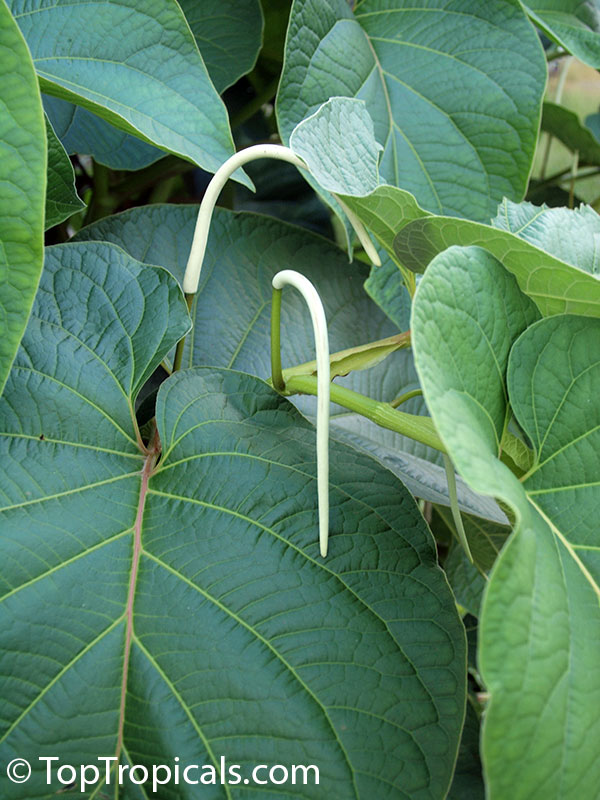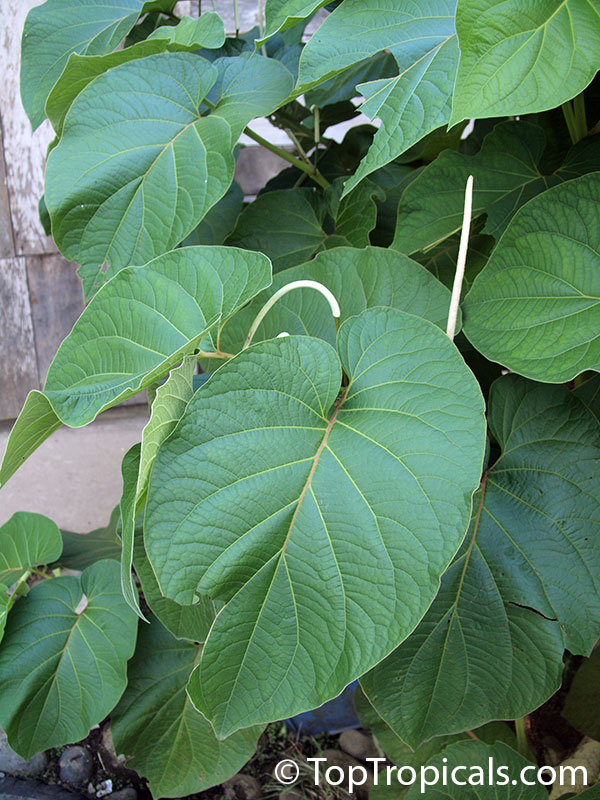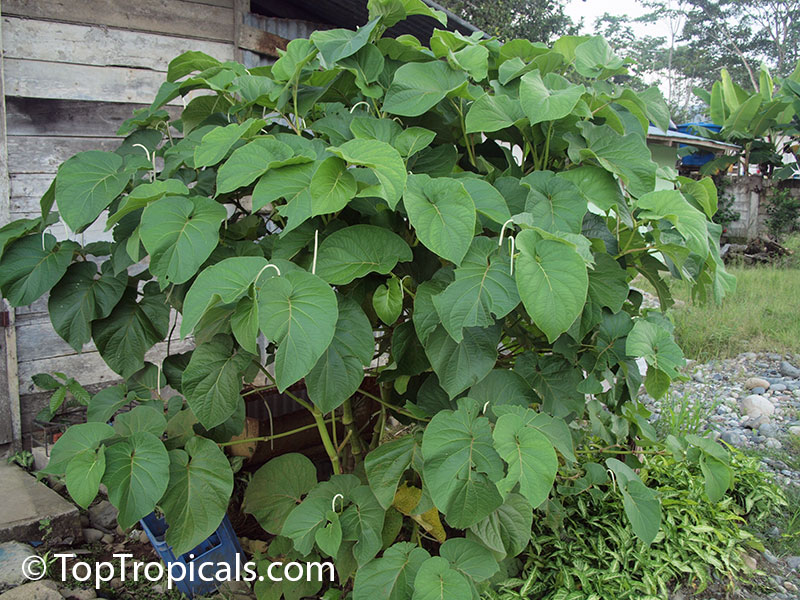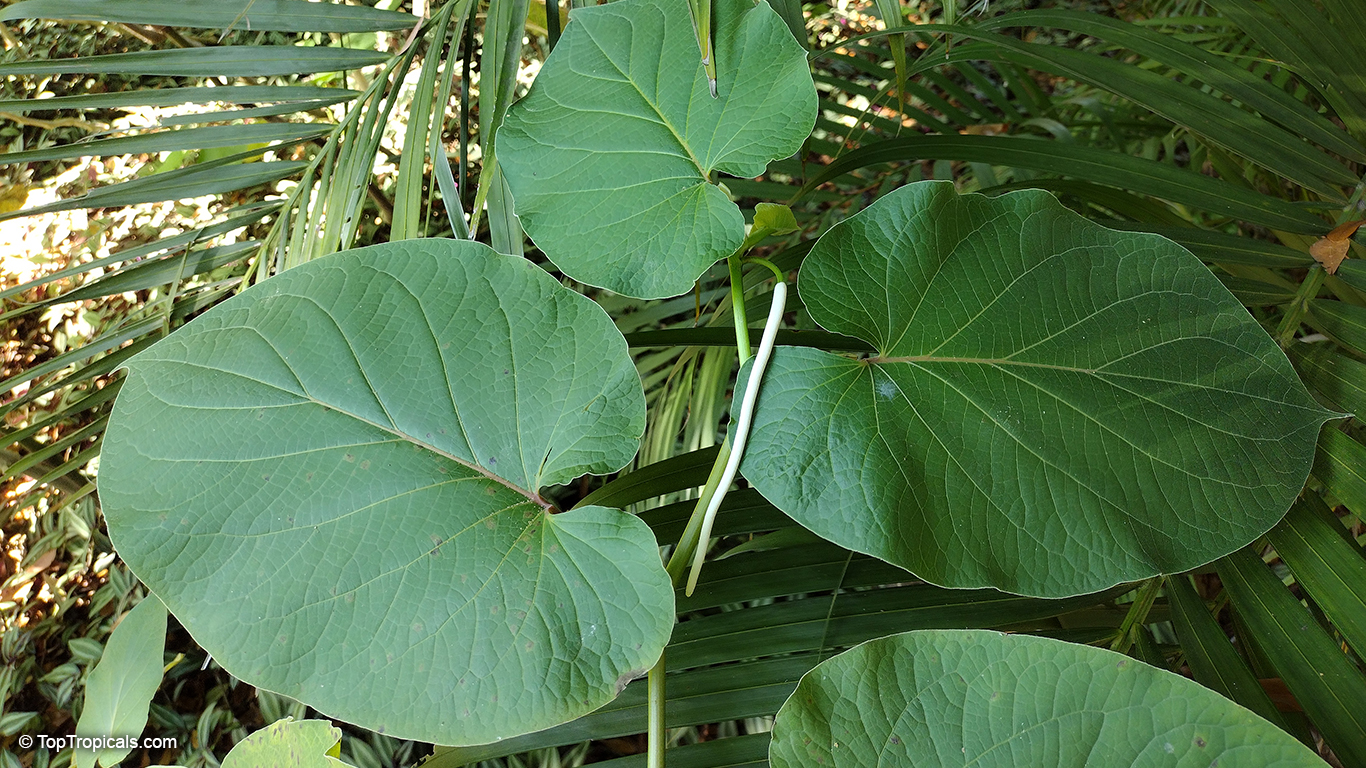Piper auritum (Root Beer Plant)
Top Tropicals Plant Encyclopedia
Botanical name: Piper auritum
Common names: Root Beer Plant, Mexican Pepperleaf, Hoja Santa , Veracruz Pepper, False Kava-Kava, Sacred Pepper
Family: Piperaceae
Origin: Mexico through Colombia












Close relative of Piper methysticum (Kava-Kava), and Piper nigrum (Black Pepper), this herb originated from Tropical America and grows also in the South Pacific. Large-leaved perennial, known for its leaves, which are used for their spicy aromatic scent and flavor, some liken to root beer, others to anise-clove. This species is easily identified by its huge leaves which can grow over a foot long in older specimens. Plants will grow out from roots so it can spread in ideal conditions. Flowers are long, skinny, white, and fuzzy looking. They may be borne in season. The plant doesn't usually form many fruits outside of its native range. The leaves are chopped and used for flavoring, as well as used whole, as wrappings for meats, tamales, etc.
P. auritum is very often confused with Piper methysticum (Kava-Kava), and probably has some similar effects. According to other sources, it can be poisonous. Explorer Captain James Cook, who gave this plant the botanical name of "intoxicating pepper", first discovered the true kava kava. Kava has been used for over 3,000 years for its medicinal effects as a sedative, muscle relaxant, diuretic, and as a remedy for nervousness and insomnia. It has been used in parts of the Pacific at traditional social gatherings as a relaxant and in cultural and religious ceremonies to achieve a higher level of consciousness. The roots can be made into a mildly narcotic beverage that is comparable to popular cocktails in our culture. Kava is now recognized by many doctors as an alternative to drugs like Xanax and Valium.
Similar plants: Piper auritum (Root Beer Plant)
- Piper aduncum (Spiked Pepper)
- Piper betle (Betel Leaf)
- Piper blattarum (Higuillo)
- Piper longum (Bengal Pepper)
- Piper magnificum (Lacquered Peppertree)
- Piper methysticum (Kava)
- Piper nigrum (Pepper)
- Piper ornatum (Celebes pepper)
- Piper peltatum (Pakina)
- Piper retrofractum (Long Pepper)
See Article about this plant.
Recommended Fertilizer: SUNSHINE Robusta - Rapid Growth Booster




